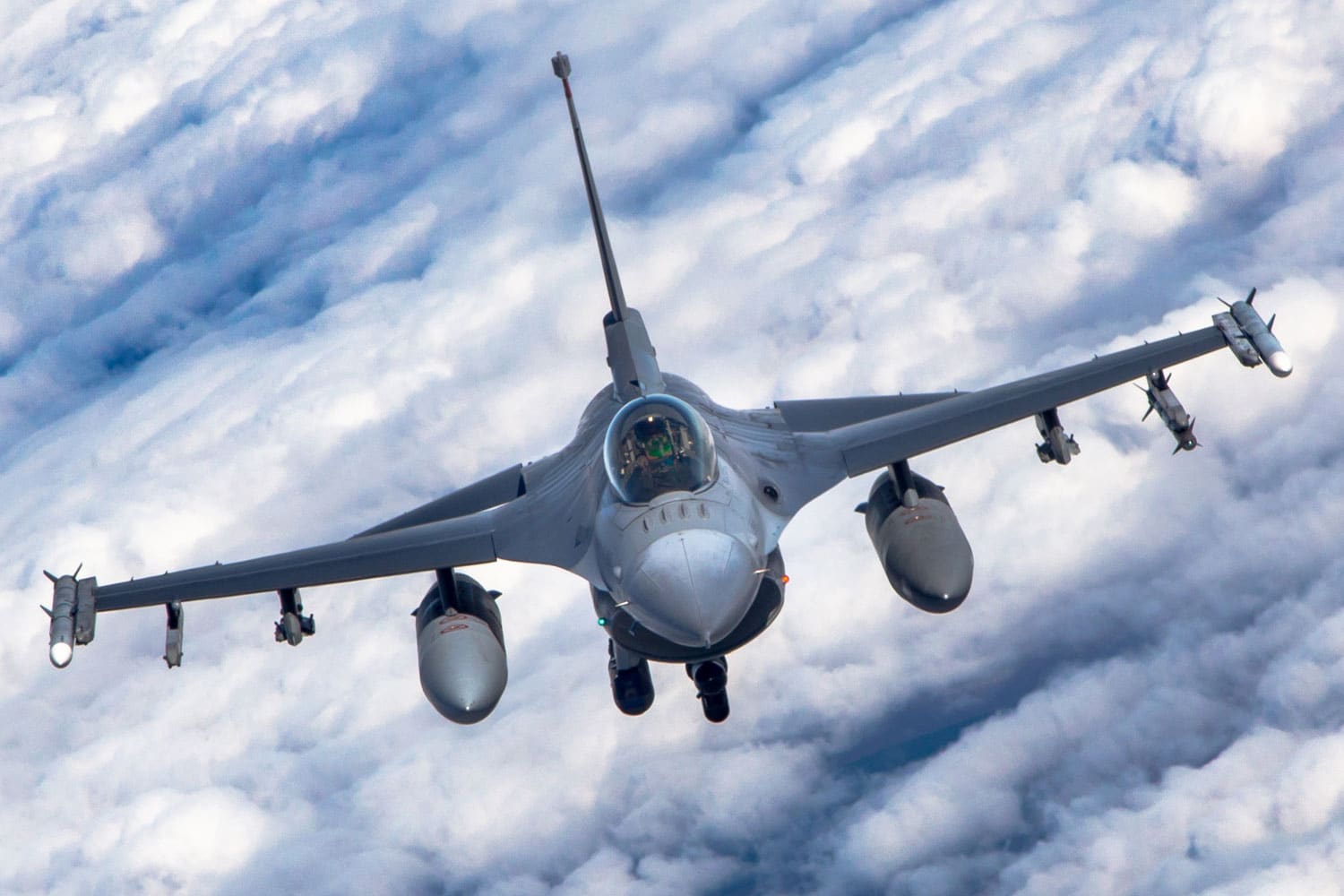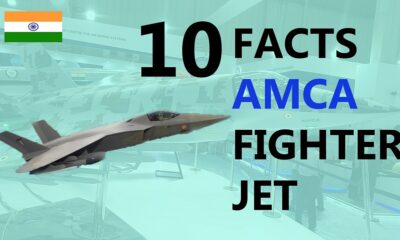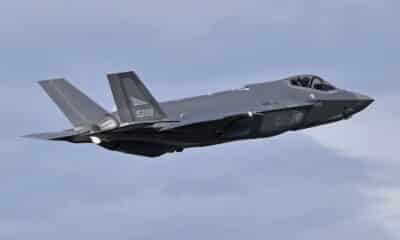Aerospace
US approves sale of an F16 fighter jet to Pakistan
According to the most recent reports, the United States has approved the sale of F-16 aircraft to Pakistan.

According to the most recent reports, the United States has approved the sale of F-16 aircraft to Pakistan. There are no weaponry packages included in the $450 million aircraft budget. This might influence future changes in Pakistan‘s military forces.
The sale of F16 aircraft has been authorized by the Biden administration. This would counteract political developments in the Asia-Pacific region as well as American efforts to increase sales. In Indian territories, it offered a variety of aircraft, including the Apache, Chinook, and FA18. Additionally, it is looking to become this region’s primary aircraft sales center.
10 Most Expensive Fighter Jets In The World(Opens in a new browser tab)
Pakistan became interested in the Chinese-built J10 and J 17 aircraft after the United States turned down its request for an F-16. This could be a fresh political attempt to boost the market for western goods. However, Pakistan’s debt may prevent it from receiving an extra loan to purchase such aircraft.
Pakistan is one of the country’s top buyers of Chinese aircraft, which are already in development. The United States’ action may sour relations with China and Pakistan.
The State Department has approved a potential foreign military sale of F-16 aircraft for sustainment and associated equipment for an estimated cost of USD 450 million, claiming that doing so will maintain Islamabad’s capacity to combat both present and future terrorism threats by maintaining its F-16 fleet.
The price of an F-16 fighter jet can range from $12.7 to $80 million, depending on the model and the nation buying it. While not a modest sum, the F-16 is actually less expensive than comparable contemporary fighter jets.
Russia prohibits its pilots from working for foreign airlines.(Opens in a new browser tab)
It is a multipurpose fighter. It has demonstrated its effectiveness in air-to-air combat and air-to-surface attacks and is quite nimble. It offers the United States and its allies a high-performance weapon system at a comparatively low cost.
This is the first significant security help provided to Pakistan since Trump declared in 2018 that he would stop all defense and security assistance to Islamabad on the grounds that Islamabad was not a partner in the nation’s battle against terrorism.
A proposed Foreign Military Sales case, about which the US Government has informed Congress, will support the F-16 of the Pakistan Air Force.
The F-16 program in Pakistan plays a significant part in the larger bilateral relationship between the United States and Pakistan. The proposed sale will maintain Pakistan’s capacity to respond to both current and potential counterterrorism challenges by preserving its F-16 aircraft. In answer to a query, the official continued, “We anticipate Pakistan to act consistently against all terrorist groups. Pakistan has access to an F-16 fleet.
The Congressional notification states that no new capabilities, weapons, or ammunition are included in the proposed sale.
According to the Pentagon, this planned sale will help the US achieve its foreign policy and national security goals by preserving Pakistan’s ability to work with US and ally forces in existing counterterrorism operations and in the planning of upcoming contingency operations.

Aerospace
Which is bigger 777x or 787 aircraft ?

The 777X is a new series of the Boeing 777 family and is designed to be larger and more efficient than its predecessor. It features two variants: the 777-8 and the 777-9, being the larger of the two.
The Boeing 777X emerges as the larger sibling within the Boeing family, representing a significant leap forward in both size and efficiency. Comprising two variants, the 777-8 and the 777-9, the latter takes the crown as the larger of the two. With its expansive fuselage and impressive wingspan, the 777X is tailored for long-range journeys and boasts a substantial passenger capacity.
On the other hand, the Boeing 787, affectionately known as the Dreamliner, occupies a niche in the market as a smaller yet formidable aircraft designed for medium to long-range flights. Its distinguishing feature lies in its composite fuselage, a technological marvel that renders it lighter and more fuel-efficient compared to conventional aluminum counterparts. The Boeing 777X is larger than the Boeing 787 aircraft.
When it comes to passenger capacity, the 777-9 reigns supreme, typically accommodating a sizeable contingent of 400-425 passengers in its standard configuration. In contrast, the 787, with its more modest dimensions, typically carries between 240-290 passengers, depending on the variant and layout.
One of the remarkable innovations introduced with the 777X is its folding wingtips, a feature designed to address the logistical challenges of accommodating such a large aircraft in conventional airport gates. These folding wingtips enable the 777X to retract its wings, allowing it to fit into gates designed for smaller aircraft while still reaping the benefits of an extended wingspan during flight, thereby enhancing fuel efficiency and operational flexibility
Aerospace
China Secures Production Certificate for Mass Production of Pilotless eVTOL Aircraft

The first passenger-carrying pilotless electric vertical takeoff and landing (eVTOL) aircraft in the world, the EH216-S, has received the Production Certificate for its eVTOL aircraft from the Civil Aviation Administration of China (CAAC).
This is a significant milestone for EHang Holdings Limited, the leading UAM technology platform company in the world. This outstanding accomplishment is another big step towards mass manufacturing for the eVTOL aircraft and the ensuing commercial operations, building on the ground-breaking acquisition of the Type Certificate and the Standard Airworthiness Certificate for the EH216-S.
The PC is a crucial certificate that the aircraft maker receives from the CAAC, the country’s aviation authority. By obtaining this certificate, EHang has demonstrated that it has set up a quality management system for mass production that satisfies the airworthiness regulation standards set forth by the CAAC, and the company has been given permission to continue producing mass quantities.
It is also a strong guarantee of the calibre of the goods made by EHang. Raw materials, supplier management, manufacturing organisation, production quality control, aircraft pre-delivery test, after-sales repair and maintenance, etc. are all included in the mass production quality management system for the EH216-S.
To ensure that every aircraft and its components that roll off the production line strictly adhere to the approved type design and safety requirements, the system sets clear guidelines and documentation for every step in the production procedure. This ensures comprehensive traceability and safety control.
Aerospace
Four Airbus A380 Superjumbos lined up to be scrapped

In a strategic move aimed at reclaiming valuable resources from the iconic Airbus A380 aircraft, VAS Aero Services and Dr. Peters Group have announced a significant collaboration.
This partnership marks a milestone in aviation logistics and aftermarket services, with four of these colossal planes slated for teardown and redistribution of used serviceable material (USM).
The venture between VAS Aero Services, renowned for its expertise in aircraft dismantlement, and Dr. Peters Group, a prominent Germany-based investment fund management firm, underscores a commitment to sustainable aviation practices. This isn’t their first foray into scrapping A380s; their successful partnership has already seen the dismantlement of these aircraft, making them pioneers in this niche.
Under the agreement, the latest consignment brings the tally to eight A380s entrusted to VAS by Dr. Peters Group. Managing Director Christian Mailly of Dr. Peters Group emphasized the trust placed in VAS, citing their unparalleled capabilities in dismantlement and aftermarket sales network. It’s a strategic move in response to the growing demand for quality USM parts, particularly with the resurgence in reliance on the A380.
Notably, the teardown process will be carried out at various locations, optimizing the positioning of harvested parts to cater to different markets. While some parts will be positioned in Europe to support operators in the region and the Middle East, others will remain in the Asia-Pacific region. This meticulous strategy ensures efficient access to spare parts, benefiting MROs and airlines across these markets.
The decision to retire these A380s comes at a time when operators are reassessing fleet strategies amidst evolving market dynamics. Despite initial plans for quick retirement due to the emergence of more fuel-efficient alternatives, factors such as a rebound in long-haul demand and delays in new widebody deliveries have prompted operators to reconsider. The A380, with its unique capacity and capabilities, presents a practical solution for short-term capacity management.



























